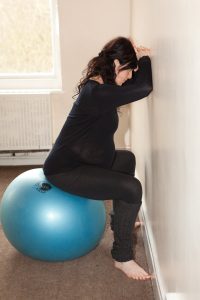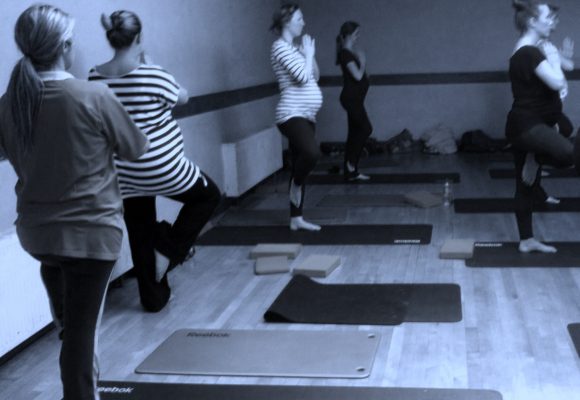 For many women, the first time they may start listening to their body is when they become pregnant. Once they have this awareness, they also become more inclined to regard the importance of nutrition and the avoidance of stimulants.
For many women, the first time they may start listening to their body is when they become pregnant. Once they have this awareness, they also become more inclined to regard the importance of nutrition and the avoidance of stimulants.
Along with this increasing awareness is quite often the desire to take up some form of exercise, which is suitable for pregnancy. Although yoga is certainly not just an “exercise routine”, its enormous benefits-physical, emotional, mental and spiritual- make it an ideal way of managing the many changes which are taking place on these levels.
Other women may already have either an existing exercise routine or an approach to yoga, which is no longer compatible with pregnancy-for example high impact aerobics, which can jar the body or a dynamic yoga style, which generates the “internal fire”. They want to continue with some kind of practice and so seek out an approach which takes into account issues such as the changing centre of gravity, raised body temperature, increased blood volume and limitations of certain movements. A regular yoga class will still present prohibitions to a pregnant woman in terms of strong twists and backbends, inverted postures, prone (i.e. face down) postures and certain pranayama (control of prana via the breath) techniques, which involve breath retention. Unless a teacher knows and understands pregnancy and how the pregnancy approach differs from the non pregnant approach the woman will not be gaining as much as she might from her yoga class.
It generally takes at least 12 weeks for fluctuating hormone levels to stabilise during pregnancy and it may be important to take things easy between weeks 7-14 in particular, especially if there has been a history of miscarriage.
My pregnancy yoga classes are suitable for women with a little, a lot or no previous experience of yoga. Muscles are toned without strain; internal space is created; posture and alignment is addressed; fatigue combated; stress and anxiety relieved; emotions stabilised and the endocrine system rebalanced.
Relaxation and breathing techniques teach how to release tension from mind and body and are extremely useful tools to take into labour! The opportunity is given for communication and bonds to be strengthened between mother and baby and the benefits of mobility, positioning, sound and breath are explored to be used as techniques to use in labour. Nutritional suggestions or lifestyle recommendations for alleviating “common pregnancy ailments” are also offered as & when required.
 Some women may experience certain conditions associated with pregnancy. This could mean anything from sciatica to varicose veins, high or low blood pressure to heartburn, to name just a few. Pregnancy can also reawaken the “body memory” to old injuries, long forgotten about. Other conditions such as pelvic girdle pain may develop and a highly experienced pregnancy yoga teacher will know how to support women presenting with a wide range of health issues by offering alternative or modified practices to suit the individual.
Some women may experience certain conditions associated with pregnancy. This could mean anything from sciatica to varicose veins, high or low blood pressure to heartburn, to name just a few. Pregnancy can also reawaken the “body memory” to old injuries, long forgotten about. Other conditions such as pelvic girdle pain may develop and a highly experienced pregnancy yoga teacher will know how to support women presenting with a wide range of health issues by offering alternative or modified practices to suit the individual.
Techniques are also taught to encourage awareness of both movement and breath. This more subtle, but no less effective, approach also gives rise to a quieter mind, by calming the parasympathetic nervous system, which is so important when unaccountable anxieties and fears arise from time to time.
Preparation for labour is as much mental as physical and some birth preparation is also included in the classes-helping women to approach labour with more confidence and courage, particularly first time mothers.
My initial introduction to anything yoga like was when I was pregnant with my first child 38 years ago! I regularly attended Active Birth Classes from about 20 weeks right up until the end of pregnancy. And never had a felt so well in my life!
I commenced, with local hatha yoga classes after my son was around 1 year old and got that same great feeling that I couldn’t quite put my finger on-I felt better on all levels! Four years after this I started to train to be a British Wheel of Yoga teacher. And the rest, as they say, is history (or Herstory)

